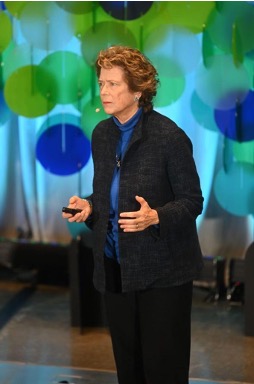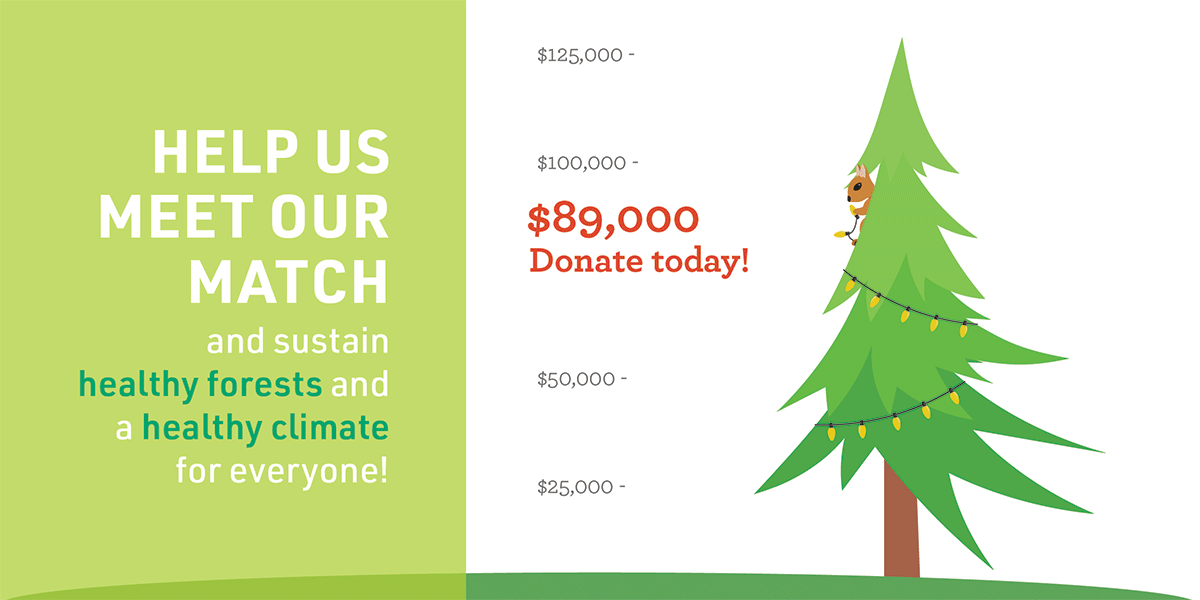FOREST FLASH
December 2024
In Pacific Forest Trust’s e-newsletter, Forest Flash, we send you the most recent PFT news and updates on forests, clean water, climate, and wildlife. Subscribe here.

What a remarkable year 2024 has been for Pacific Forest Trust! We made significant strides in conservation, stewardship, policy innovation, and community engagement. Your continued support has been instrumental in helping us advance our mission of protecting and restoring forests for climate, wildlife, and communities.
Below is a highlight reel of 2024 achievements, and harbingers of successes to come.


Trinity Headwaters
This year, we celebrated several major conservation milestones. First, we kicked off a groundbreaking partnership with the Southern Sierra Miwuk Nation; PFT will soon return 900 acres of ancestral lands, overlooking the Yosemite Valley, to the tribe. Supported by a grant from California Natural Resources Agency’s Tribal Nature-Based Solutions Program, this project not only addresses historical injustices but also sets a precedent for tribal-led, nature-based projects that seek to address biodiversity, climate change, and water challenges.

PFT Board of Directors met with members of the Southern Sierra Miwuk Nation for a July tour of PFT’s Henness Ridge property.
We also secured the future of the Trinity River’s headwaters through a landmark $15.5 million acquisition of 11,000 acres in the Upper Trinity River watershed, encompassing nearly 10% of this critical water source. The Trinity Headwaters Conservation Project, funded by state and federal agencies, ensures protection for habitat that supports nearly 250 species, including endangered wildlife, while also contributing to California’s ambitious 30×30 conservation goals.
Lastly, we made significant progress in our efforts to conserve the 450-acre Willow-Witt Ranch near the Cascade-Siskiyou National Monument. Through a working forest conservation easement, we are safeguarding this ecological gem with its diverse habitats, ensuring the long-term preservation of its vital ecosystems.
Perpetual Stewardship
Ensuring long-term conservation success through sustainable land management and commitment to biodiversity protection


Some of the creek restoration crew on van Eck Oregon.
In our care and under our active conservation is 130,000 acres, across two states, and protected by 38 conservation easements. And, over the last 12 months, we made great progress on various restoration projects across a portion of those easements. On the Jones Ranch tract of the van Eck Oregon Forest, we completed a vital stream restoration project to support the recovery of the threatened Oregon Coast Coho salmon. By strategically placing 80 large trees, creating spawning pools, and removing invasive species, we revitalized critical spawning grounds.
On the McCloud Soda Springs Working Forest, we conducted the largest prescribed burn on private commercial forestland in over 20 years. This innovative “good fire” practice demonstrates how controlled burns can enhance forest resilience and reduce wildfire risks. To promote the restoration of beneficial fire regimes, we created a video series, for forest landowners and other interested parties, that documented all aspects of the burn, from planning to completion. This burn also received notable media attention, including a feature on CBS Evening News, which emphasized its role as a model for proactive forest management and climate adaptation strategies.
Please consider a donation to the Pacific Forest Trust. Your help—in all capacities—makes our work possible. Thanks for supporting us as we support forests!
Policy to Move Us Forward
PFT leaders helped propose and shape historic legislation that will help combat the climate crisis & its daily effects

This year marked major advancements in leveraging natural and working lands to combat climate change, with PFT playing a pivotal role.
On Earth Day, Governor Gavin Newsom adopted recommendations from the AB1757 Expert Advisory Committee, chaired by PFT President Laurie Wayburn. His plan, part of California’s Climate Commitment, includes 81 ambitious targets to achieve carbon neutrality by 2045. A cornerstone is the conservation and management of nearly 12 million acres of forests to enhance biodiversity, water security, and carbon sequestration. This groundbreaking policy sets a national model for deploying nature-based solutions.

Governor Gavin Newsom and PFT President Laurie Wayburn celebrating the historic climate targets.
California voters passed Proposition 4, the $10 billion Climate Bond, the largest climate resilience investment in the state’s history. Shaped with PFT’s expertise, Prop 4 allocates $1.2 billion for biodiversity conservation and $1.5 billion for wildfire resilience. These investments align with California’s 30×30 campaign and bolster the state’s leadership in natural climate solutions and adaptation efforts.
At the federal level, Representative John Garamendi introduced the Forest Legacy Management Flexibility Act (H.R.9602), expanding public-private conservation partnerships. This legislation allows accredited nonprofit land trusts to hold conservation easements, reducing administrative barriers and enabling states to conserve more forestland. PFT’s leadership and collaboration with many other working lands groups, states and organizations helped shape this effort, which will scale private forestlands sustainable management and conserve well managed working landscapes.
In California, legislators advanced two notable PFT-sponsored bills. Senator Monique Limón’s SB1101 promotes the use of prescribed fire to restore ecosystems and mitigate wildfire risk by streamlining practices and fostering collaboration among stakeholders. Assemblymember Jim Wood’s AB 2276—which we worked closely with the California Forestry Association to craft—seeks to both consolidate and improve existing exemptions that make it easier and more economical for private landowners to reduce wildfire risk through forest-thinning projects. The bill also includes provisions to restore oak woodlands by reducing conifer encroachment, addressing nearly a century of fire suppression that disrupted the natural role of low-intensity fires historically managed by Native Americans.
Please consider a donation to the Pacific Forest Trust. Your help—in all capacities—makes our work possible. Thanks for supporting us as we support forests!
Community Connections
Singing forests’ praises, far and wide!

Students enjoying MADF’s “outdoor classroom.”
We continued to build meaningful connections with community members, policymakers and leaders, as well as the next generation of stewards, furthering our mission to spread the good word of forests to all.
Our 1,120-acre Mt. Ashland Demonstration Forest has become a dynamic outdoor classroom. In May and November this year, students from Phoenix and Artmadillo High Schools took part in our inaugural year of collaboration with local schools at the demonstration forest. PFT designed hands-on experiences that complement what students were learning in the classroom regarding ecology, forest dynamics, and conservation. Activities included wildlife tracking, tree identification and aging, as well as learning about general forest health and resilience — and how restoring beneficial fire regimes can help achieve these goals. “This was such a great experience,” shared one pupil, “and I learned that fire can be a good thing.”

Wayburn on stage at TEDxBoston
Meanwhile, on the national stage, PFT has further cemented itself as an authority on forest conservation and nature-based climate solutions. Our president, Laurie Wayburn, shared her insights on PFT’s innovative approach at prominent events: TEDxBoston (video to come), Yale University’s Forest Forum series, the Techonomy Climate conference, a California Natural Resources Agency (CNRA) webinar on 30×30 milestones, as well as for Forest History Society’s Forest Optimism series. We also made the rounds on the podcast circuit, namely with features on the popular Path to Zero, Engineering with Nature, and Forces for Nature podcasts. (Comprehensive playlist of PFT-featured podcasts here.)
As we look ahead to 2025, we’re inspired by the progress we’ve made and the partnerships that drive our work. Thank you for being part of this journey. Together, we are ensuring a future where forests and people thrive.
ICYMI
In case you missed it (ICYMI), here’s a highlight reel of PFT’s year in media exposure!
- PFT President Laurie Wayburn was featured in a recent Los Angeles Times article on the very topic of cuts to climate programs in Newsom’s 2024 budget.
- As of January 2024, PFT’s Shasta Timberlands Conservation Easement had recently been completed, and it got a write-up in the Redding Record Searchlight, as well as a highlight in Industry Intelligence Inc.
- PFT President Laurie Wayburn wrote a recent op-ed for Capitol Weekly, which lays out the case for why California must invest in its natural and working lands on par with investments in the green energy and sustainable transportation sectors to meet the climate crisis.
- Author John J. Berger just published a book, Solving the Climate Crisis, which features a chapter on PFT’s innovative work, including our ongoing efforts to promote the role of forests, as well as empower private forestland owners, in larger actions on climate solutions. “PFT,” writes Berger, “is demonstrating that managing a natural forest is not only much more productive for water, wildlife, and the climate, but also far less risky for the forest owner.”
- The Capitol Weekly podcast aired with a discussion with Laurie Wayburn on how the conservation and management of California’s forests, as well as that of its other natural and working lands, can help the state reach its ambitious climate goals and mitigate the worst effects of climate change.
- PFT was quoted in a recent POLITICO piece that highlights the new focus, within California politics, on climate change’s effects on rural communities. “There really is the opportunity,” Wayburn said, “to shift the emphasis in our climate investments to really reflect the value of natural and working lands.”
- For the Los Angeles Times, and on the occasion of Arbor Day, PFT President Laurie Wayburn penned an op-ed on how conserving and restoring existing forests is far more essential and effective in combating climate change than tree planting alone.
- Our pioneering advocacy for wildlife crossings, as well as our commitment to conserving crucial wildlife migration corridors, was highlighted in this great Earth & I article on the topic.
- PFT President Laurie Wayburn was quoted in this Bloomberg article about how late-blooming vegetation can cause increased wildfire risk in California.
- On Smokey Bear’s 80th birthday, PFT President Laurie Wayburn penned an op-ed in The Hill about how Smokey’s “only YOU can prevent wildfires” slogan inadvertently created a culture of dangerous fire suppression. Now, he can right that wrong by embracing a message of “good fire.”
- Several outlets have reported on our completion of the Trinity Headwaters project, which secures a critical water source for California. Here’s a selection of the coverage: SFGate, Maven’s Notebook, the Redding Record Searchlight, as well as this wonderful write-up from our partners at the Sierra Nevada Conservancy.
- PFT’s VP of Policy & Incentives, Paul Mason, spoke out against SB610 in The Sacramento Bee, highlighting the risks of eliminating California’s tiered wildfire hazard system, which could undermine fire-resilient housing development. This bill has now been held in the Legislature.
- PFT is the fiscal agent for Michael Taylor, who discovers some of the world’s tallest trees. “His current project, with the Pacific Forest Trust” states this recent SF Gate article, is to identify the 50 tallest individual trees of each of the West Coast’s 10 tallest tree species.”
- The Greenwich Sentinel wrote this lovely article about our November showing of BEYOND THE TREES at the Bruce Museum in Greenwich, CT.

